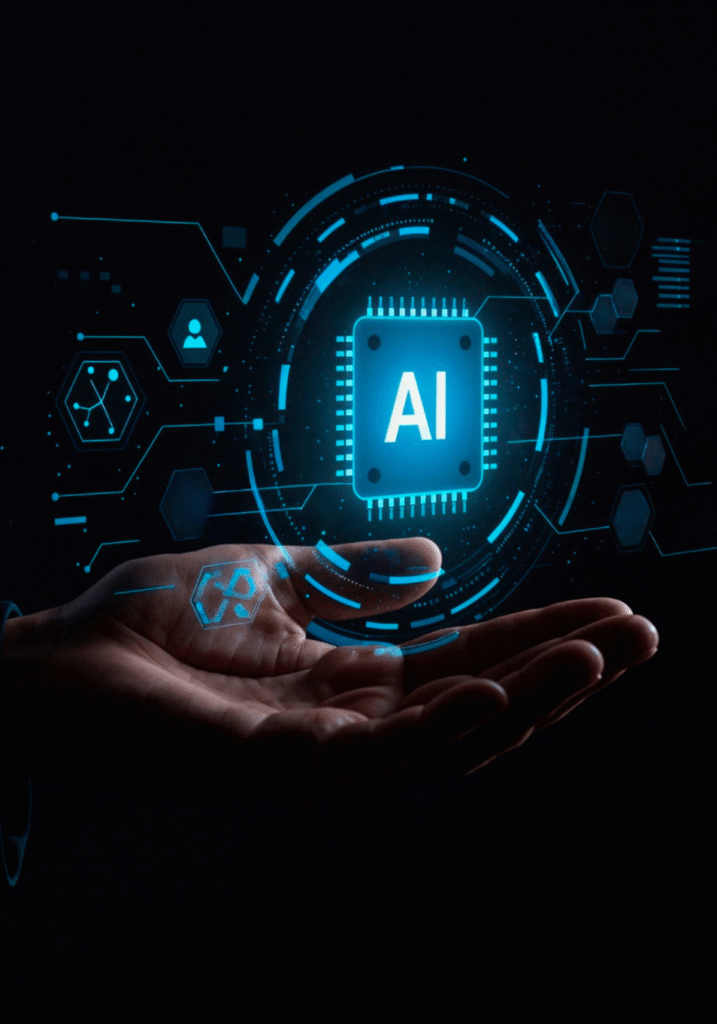Table of Contents
Generative AI and Creativity in Automation
One of the most prominent trends for 2024 is the rise of Generative AI. Generative AI models like OpenAI’s GPT-4 and DALL-E are revolutionizing content creation, from text to images, videos, and even code generation. These tools are enabling businesses to automate creative tasks, creating personalized content and marketing materials at scale.
- Why It Matters: Generative AI can automate creative processes, allowing businesses to generate high-quality content, improve efficiency, and enhance personalization.
- Future Impact: Expect to see widespread adoption across industries like advertising, design, and even software development.
Data-Centric AI for Better Decision-Making
In 2024, businesses will shift towards data-centric AI, where the focus is on improving data quality, diversity, and labeling to enhance AI performance. By refining datasets rather than solely focusing on model improvements, companies can achieve more accurate and reliable AI predictions.
- Why It Matters: High-quality data drives better AI outcomes, leading to more accurate decision-making and business insights.
- Future Impact: Organizations will invest in data governance, data labeling, and AI ethics to ensure their models are built on high-quality data.

AI-Powered Cybersecurity
As cyberattacks become more sophisticated, the use of AI in cybersecurity will continue to rise. AI algorithms will help detect threats in real-time, analyze attack patterns, and mitigate risks faster than traditional security methods.
- Why It Matters: With the increasing volume of data and digital assets, protecting against cyber threats is crucial. AI enhances security by identifying and responding to threats in milliseconds.
- Future Impact: Expect AI-driven security tools to become standard in industries like finance, healthcare, and e-commerce.
Explainable AI (XAI) for Trust and Transparency
The demand for Explainable AI (XAI) is growing as organizations and regulators emphasize transparency in AI decision-making. XAI enables users to understand how AI models make decisions, ensuring accountability and building trust in AI systems.
- Why It Matters: Explainability is critical for sectors like healthcare, finance, and legal industries, where AI decisions need to be justified and compliant with regulations.
- Future Impact: XAI will be integrated into regulatory frameworks, helping businesses meet compliance and maintain trust with stakeholders.
AI and Sustainability Initiatives
AI is playing an increasingly significant role in helping organizations meet their sustainability goals. By using AI-driven solutions, businesses can optimize energy consumption, reduce waste, and improve resource management.
- Why It Matters: AI can analyze vast datasets to optimize operations, making industries like manufacturing, agriculture, and energy more eco-friendly.
- Future Impact: Companies will use AI to meet environmental, social, and governance (ESG) criteria, helping them achieve sustainability targets.
Low-Code and No-Code AI Platforms
In 2024, low-code and no-code AI platforms will make AI development more accessible to non-technical professionals. These platforms enable businesses to create AI-driven applications without needing in-depth coding knowledge, speeding up development timelines and reducing costs.
- Why It Matters: Democratizing AI development allows businesses of all sizes to leverage AI for automation, analytics, and decision-making without needing large development teams.
- Future Impact: The rise of citizen developers will empower more people to create AI-driven solutions, expanding AI’s reach across industries.
AI in Healthcare and Personalized Medicine
AI is set to transform healthcare by enabling personalized medicine, where treatments are tailored to individual patients based on their genetic makeup and medical history. AI can analyze data from medical records, wearable devices, and genomics to offer precise healthcare recommendations.
- Why It Matters: AI-driven diagnostics and treatment plans will improve patient outcomes by offering more targeted therapies.
- Future Impact: Expect to see AI integrated into patient care systems, improving early disease detection and personalized treatments.
Data Privacy and AI Regulation
As AI continues to grow, data privacy and AI regulation will take center stage in 2024. Governments and regulators will implement stricter guidelines to ensure that AI systems comply with data privacy laws like GDPR and CCPA.
- Why It Matters: Protecting personal data is critical as AI systems rely on massive datasets. Businesses must ensure compliance to avoid penalties.
- Future Impact: Expect more AI frameworks that prioritize privacy by design, giving users greater control over their data.
AI for Predictive Analytics and Business Forecasting
Predictive analytics, powered by AI, is helping businesses anticipate market trends, customer behavior, and operational challenges. By analyzing historical data, AI can make accurate predictions, enabling businesses to make data-driven decisions.
- Why It Matters: Predictive analytics allows businesses to optimize supply chains, improve customer engagement, and reduce operational risks.
- Future Impact: More businesses will integrate AI-powered analytics to forecast market trends and enhance strategic planning.
AI-Driven Automation Across Industries
From manufacturing to finance, AI-driven automation is revolutionizing industries by optimizing workflows, reducing errors, and cutting operational costs. In 2024, AI automation tools will continue to improve, enabling businesses to streamline processes and improve efficiency.
- Why It Matters: Automation reduces the need for manual labor, enabling businesses to focus on innovation and growth.
- Future Impact: Expect industries like finance, logistics, and healthcare to adopt AI automation at scale, improving efficiency and reducing costs.
Conclusion
The future of data and AI in 2024 is set to revolutionize how businesses operate, innovate, and serve their customers. From Generative AI and predictive analytics to AI-powered cybersecurity and personalized healthcare, the trends we’ve explored in this blog are just the beginning. Staying ahead of these trends will give businesses a competitive advantage, helping them drive growth, efficiency, and customer satisfaction.
For more insights on data and AI trends, stay tuned to our blog or contact us for expert guidance on leveraging AI for your business.


